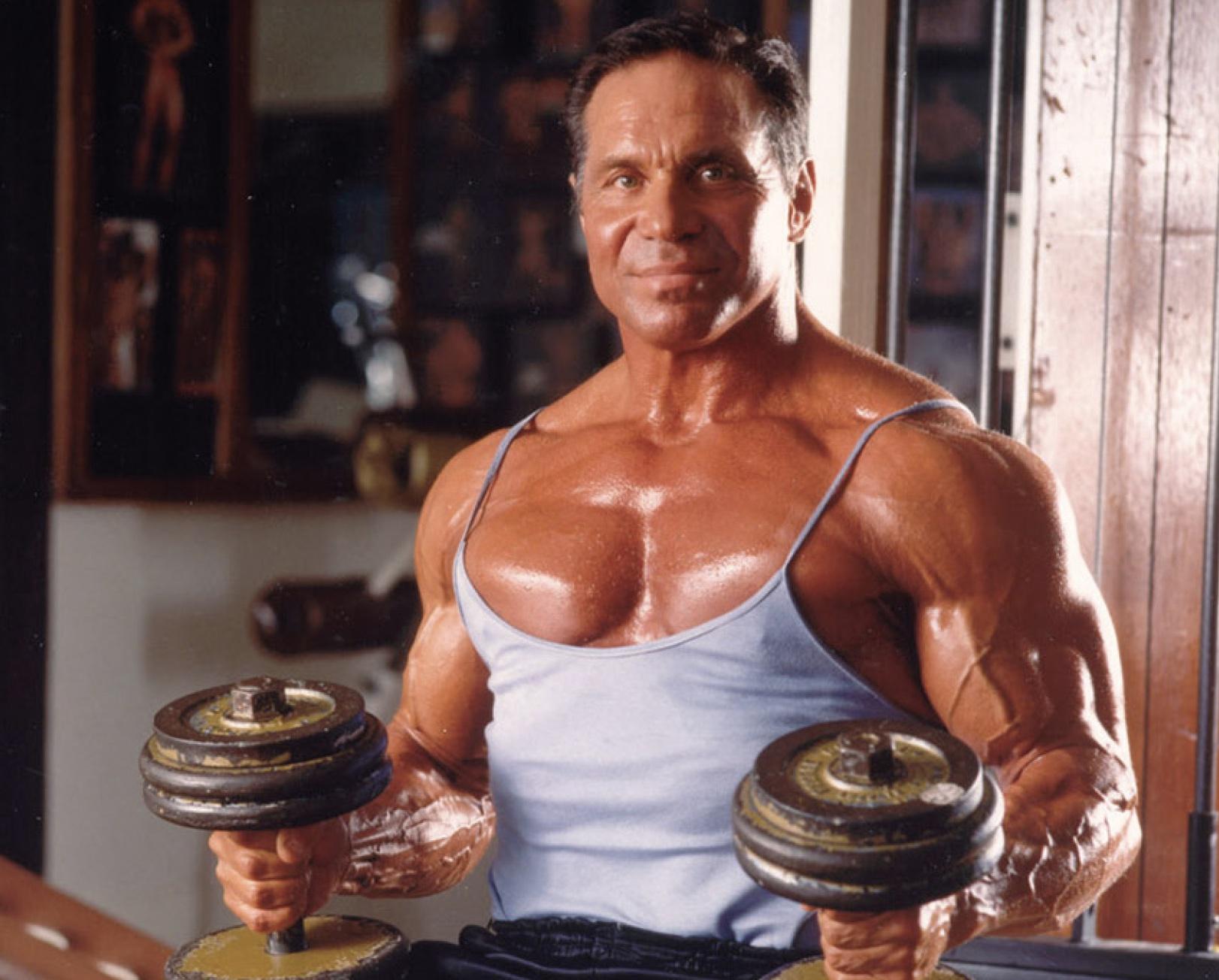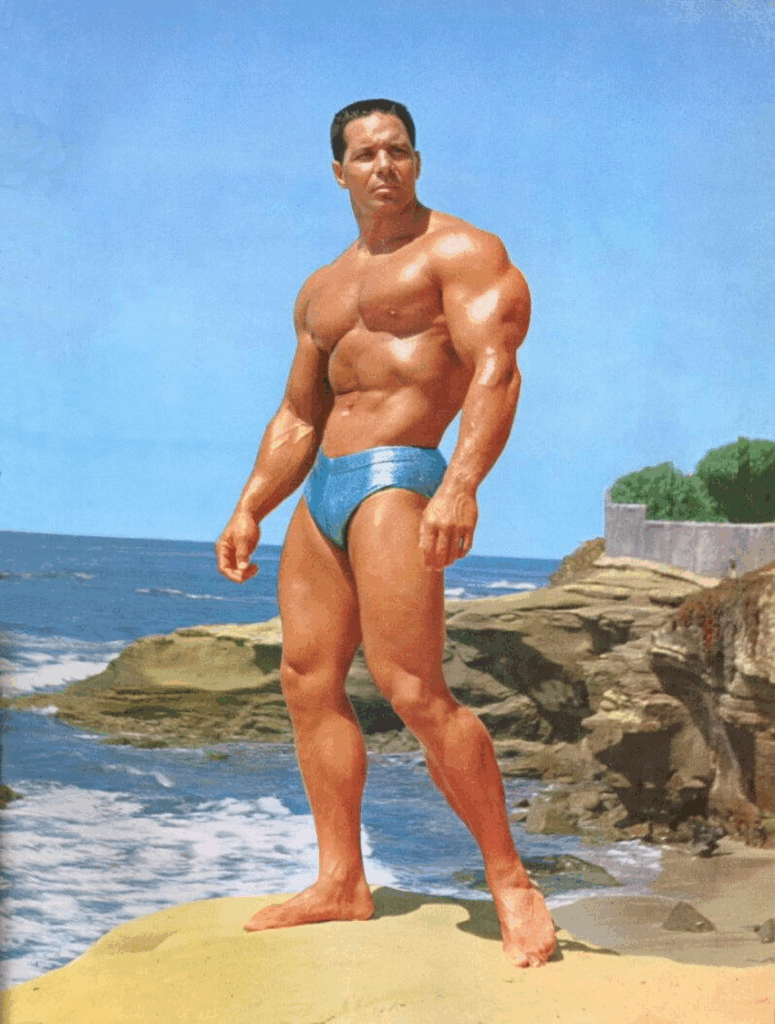- Messages
- 4,154
- Reaction score
- 1,831
- Points
- 113

Bill Pearl’s legacy in bodybuilding stretches far beyond trophies and titles. Known for his symmetrical physique, unwavering discipline, and commitment to natural training, Pearl represented a generation of lifters who built strength with purpose—and longevity in mind.
While many of his peers pursued rapid gains, Pearl took a more balanced and sustainable approach. His nutrition philosophy was simple but powerful: eat real food, stay consistent, and fuel performance with health as the foundation. Long before plant-based diets and wellness trends took hold, Pearl had already adopted a lacto-ovo-vegetarian lifestyle, proving that muscle and meat weren’t synonymous.
For bodybuilders, classic physique enthusiasts, and athletes seeking lasting vitality, Bill Pearl’s dietary blueprint offers timeless guidance. This article explores how he approached nutrition—from macronutrients and meal timing to supplements and mindset—and how modern lifters can apply those same principles today.
Who was Bill Pearl in Bodybuilding?
Bill Pearl, born on October 31, 1930, in Preneville, Oregon, was a legendary figure in the bodybuilding world. He was not only known for his impressive physique but also for his contributions to the sport’s growth, integrity, and philosophy.
Trained by Leo Stern in Leo Stern’s Gym, Pearl won the prestigious Mr. Universe title five times between 1953 and 1971. He was also crowned Mr America, a remarkable win that solidified his status as one of the greatest classic bodybuilders of all time. But his influence extended far beyond the competition stage.
Unlike many of his contemporaries, Pearl promoted a natural and disciplined approach to training. At a time when steroid use began infiltrating the sport, he became a role model for natural bodybuilders, focusing on clean bodybuilding nutrition, consistent training, and mental discipline.
His physique was not only massive but also symmetrical and aesthetically pleasing—qualities that defined the “classic physique” ideal many modern lifters strive to emulate.
Pearl was also an excellent author and mentor in the bodybuilding industry. His book, “Keys to the Inner Universe,” became the foundation for serious athletes and bodybuilders, offering comprehensive workout plans and nutritional guidance. Through seminars and interviews in publications like Iron Man, he educated generations of athletes, shaping how bodybuilders approached their craft.
Most importantly, Bill Pearl represented longevity and health in a field often marked by short careers and health decline. Well into his 70s and 80s, he remained active, muscular, and mentally sharp.
At 91 years old, when he passed away, Bill Pearl was still strong and disciplined, working out six days a week, living proof that bodybuilding, when practiced with wisdom and balance, could enhance both performance and longevity.
In short, Bill Pearl matters in bodybuilding history not just for the titles he won, but for the way he elevated the sport with his principles, mentorship, and lifelong commitment to health-first, natural bodybuilding.
Bill Pearl’s Dietary Approach: Precision and Consistency
Pearl approached his diet with the same meticulous attention he gave his workouts. His routine was based on consistency, balance, and function, rather than extreme calorie manipulation or supplementation overload.
Macronutrient-wise, Pearl advocated for high-protein intake, like any other seasoned bodybuilder, to sustain muscle growth and maintain muscle mass, especially during intense training. His protein sources included eggs, milk, chicken, red meat, and turkey.
At the age of 39, Pearl made a significant transition to a vegetarian diet, adopting a lacto-ovo-vegetarian approach, surprising many in the bodybuilding world. His shift wasn’t trend-driven. It stemmed from personal health concerns after he weighed 242 pounds and his hand measured 21 inches at a height of 5’10” at the time he won Mr universe.
Pearl’s plant-forward approach still prioritized protein. However, his diet leaned heavily on eggs, dairy products, legumes, grains, and vegetables. For example, in the morning, he took a wholesome breakfast of 6 scrambled eggs, which provided high-quality protein to build muscle mass, oatmeal for complex carbohydrates to fuel his workouts, and fresh fruits like watermelon for essential vitamins.
During the day, Pearl ate regular meals and snacks to boost his metabolism and support continuous muscle repair. Lunch included cottage cheese or low-fat cheese, brown rice or quinoa, and steamed or raw vegetables (such as broccoli, carrots, or spinach).
He also added healthy fats through dairy products, such as a glass of milk or yogurt, as well as avocados, nuts, and seeds, to promote satiety and aid in nutrient absorption.
Dinners followed the same principles of balance and nutrition. Bill could eat meals like egg-based dish, such as a vegetable omelet or egg casserole, sweet potatoes, brown rice, or whole-grain pasta, steamed green vegetables, like kale, green beans, or brussels sprouts, salad with olive oil dressing, nuts, and maybe shredded cheese and low-fat yogurt or a light dessert like fruit with cottage cheese.
Meal timing was essential in order to support energy levels and muscle protein synthesis across the day. He ate five to six smaller meals throughout the day at the same time to maintain stable blood sugar levels, support muscle recovery, and avoid fat accumulation.
He suggested that if your fitness goal is to build lean muscles, you should consume a protein-dense meal or snack within 30 minutes after a workout. This stance challenged the protein-centric, meat-heavy norms of bodybuilding nutrition at the time and foreshadowed a growing interest in plant-based diet nutrition for athletes.

Bill Pearl’s Supplement Routine
When it comes to supplements, Bill Pearl suggests using them primarily to fill nutritional gaps, rather than relying on them as meal replacements. He discouraged overreliance on protein powders and synthetic products, instead emphasizing the benefits of nutrient-dense foods.
He claimed that if you’re consuming 400 to 500 grams of protein per day from whole foods, there’s little need for additional protein supplements. However, for those who struggled to meet their protein needs solely through food, he occasionally recommended milk and egg protein concentrates.
In addition to protein, Pearl supplemented vitamin C, vitamin E, and a vitamin B complex. He took 1,000 mg of vitamin C daily for immune function, 400 IU of vitamin E, and a B-complex to enhance metabolism and nervous system health. These supplements filled in nutritional gaps without replacing whole foods, aligning with his whole-food-first philosophy.
Comparing Pearl’s Diet to Modern Bodybuilding Trends
Pearl’s philosophy was classic, steady, and health-conscious. Rather than heavily engineered supplements and restrictive meal plans, he recommends whole, unprocessed foods. In contrast, modern bodybuilding often relies on processed protein powders, pre-packaged meals, and highly calculated macronutrient splits, overlooking the long-term health benefits of natural, whole-food choices.
Meal timing was another area where Pearl showed foresight. He believed in eating at regular intervals to maintain energy levels, promote recovery, and avoid overeating. This contrasts with some modern approaches that lean into intermittent fasting or large, infrequent meals.
Most significantly, Pearl promoted a strong connection with food. Instead of strictly counting every calorie of macronutrients, he encouraged listening to hunger cues and adjusting food intake accordingly. Modern bodybuilding often emphasizes control, discipline, and structure, sometimes at the expense of well-being.
Where modern routines can be rigid and short-term, Pearl’s diet was sustainable, adaptable, and built longevity. Compared to the current meat-heavy, keto-style workouts popular in the fitness industry, his transformation to a vegetarian lifestyle is far more dramatic. Yet, his physique remained strong, functional, and impressive well into his 90s.
Pearl’s approach reminds us that bodybuilding success can coexist with a healthy, long-term relationship with food, something many modern lifters could benefit from revisiting.
How Modern Bodybuilders Can Apply Bill Pearl’s Diet Principles Today
As a modern bodybuilder, you can benefit greatly from integrating Bill Pearl’s dietary philosophy into your fitness routines. Start by prioritizing whole foods such as dairy, whole grains, fruits, vegetables, and healthy fats over processed options. It supports muscle growth, performance, and long-term health.
Adopting his approach doesn’t mean eliminating animal products unless desired. Instead, it means prioritizing nutrient density, avoiding excess, and building a long-term plan for health and performance.
Adopt a balanced approach to macronutrients by incorporating quality proteins, complex carbs, and healthy fats in every meal. Following Pearl’s philosophy, eat regularly throughout the day to maintain stable energy levels, promote muscle recovery, and reduce hunger pangs.
Also, listen to your body and practice mindful eating for the best results. Pearl recommends being in tune with hunger cues and adjusting ood intake accordingly.
Finally, stay well-hydrated and consider nutrition as a long-term commitment rather than a short-term fix. By applying these timeless principles with modern knowledge, you can achieve better results while building a sustainable, health-focused lifestyle.

The Key Insights from Pearl’s Own Words
In interviews and writings, including his classic work “Keys to the Inner Universe,” Pearl emphasized the mental discipline that accompanies nutritional consistency. He once said,
“Training is important, but what you eat and how you live is what shapes your health in the long run.” This philosophy shows a lifelong commitment to holistic well-being, not just aesthetic
Pearl also emphasized the importance of consistency and discipline over shortcuts. In many of his interviews and writings, including his seminal book “Keys to the Inner Universe,” he warned against chasing quick results or relying too heavily on supplements. He often said,
“Bodybuilding isn’t just about what you do in the gym. It’s about what you do the other 23 hours of the day.”
This philosophy emphasizes that muscle growth and health are the result of daily habits, including proper nutrition, adequate rest, and mental discipline.
Another key insight was his emphasis on sustainability and longevity:
“You have to find something you can do for the rest of your life. That includes how you eat.”
Unlike modern trends that promote extreme diets, Pearl advocated for nutritional approaches that support long-term health and well-being. These principles — balance, mindfulness, and dedication — can be of help to modern natural bodybuilders and anyone seeking a lifetime of strength and vitality.
Conclusion
Bill Pearl’s approach to bodybuilding nutrition was decades ahead of its time. While others focused on shortcuts, trends, or extreme diets, Pearl quietly built a routine rooted in balance, functionality, and discipline. His transition to a vegetarian diet didn’t weaken his performance—it reinforced his belief that health and strength could (and should) go hand in hand.
What makes his philosophy so enduring is its simplicity: whole foods over processed, consistency over chaos, and longevity over ego. It’s a blueprint that modern lifters—especially those burned out by constant bulking, cutting, and calculating—can return to for clarity and results.
Today’s fitness landscape is crowded with contradictory advice and fast fixes. But Pearl’s message remains clear: listen to your body, train with purpose, and fuel yourself for the long haul. If you’re serious about building muscle, staying lean, and maintaining your health as you age, you don’t need to reinvent the wheel. Just follow the principles that kept Bill Pearl strong into his 80s.

